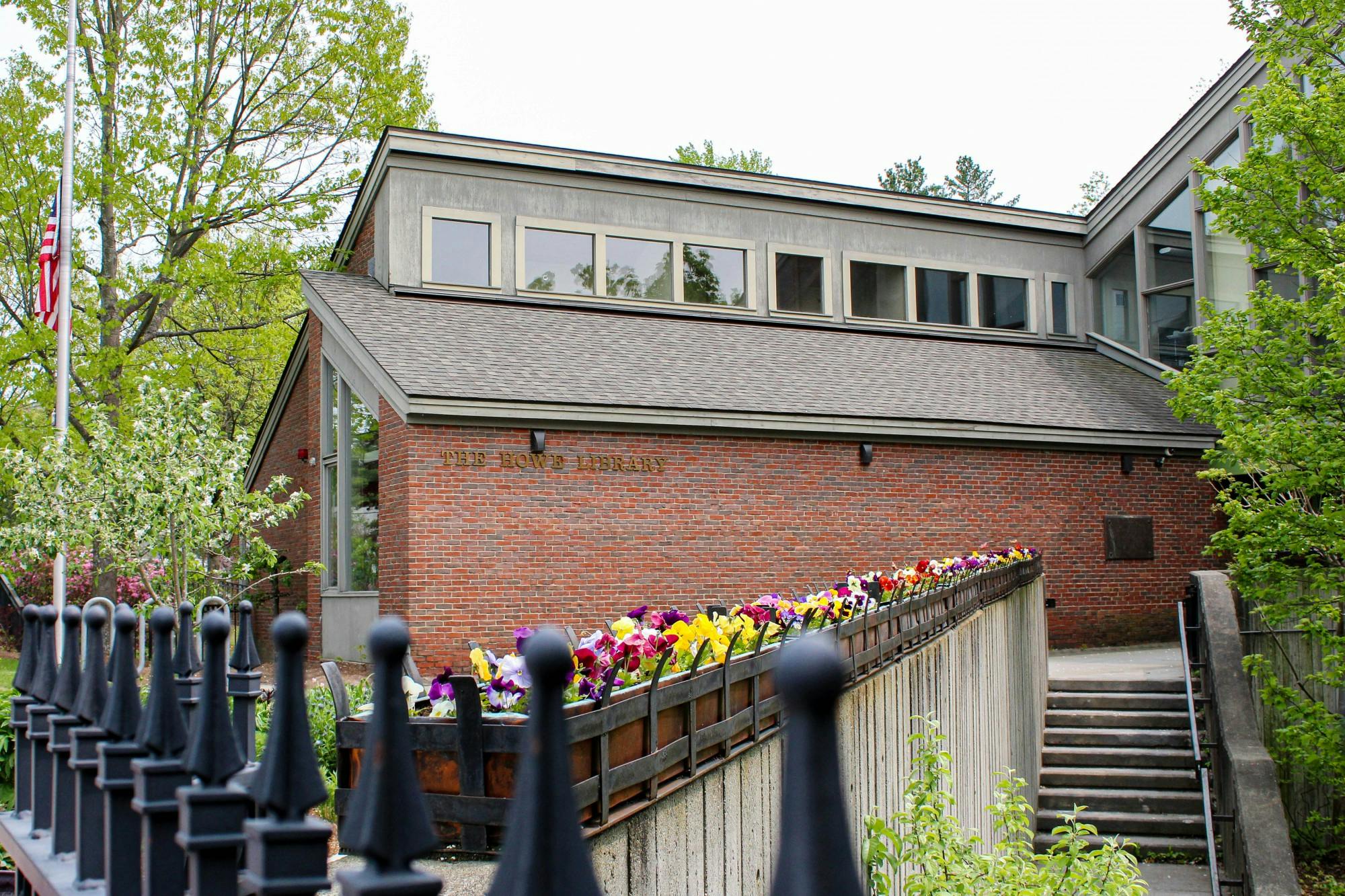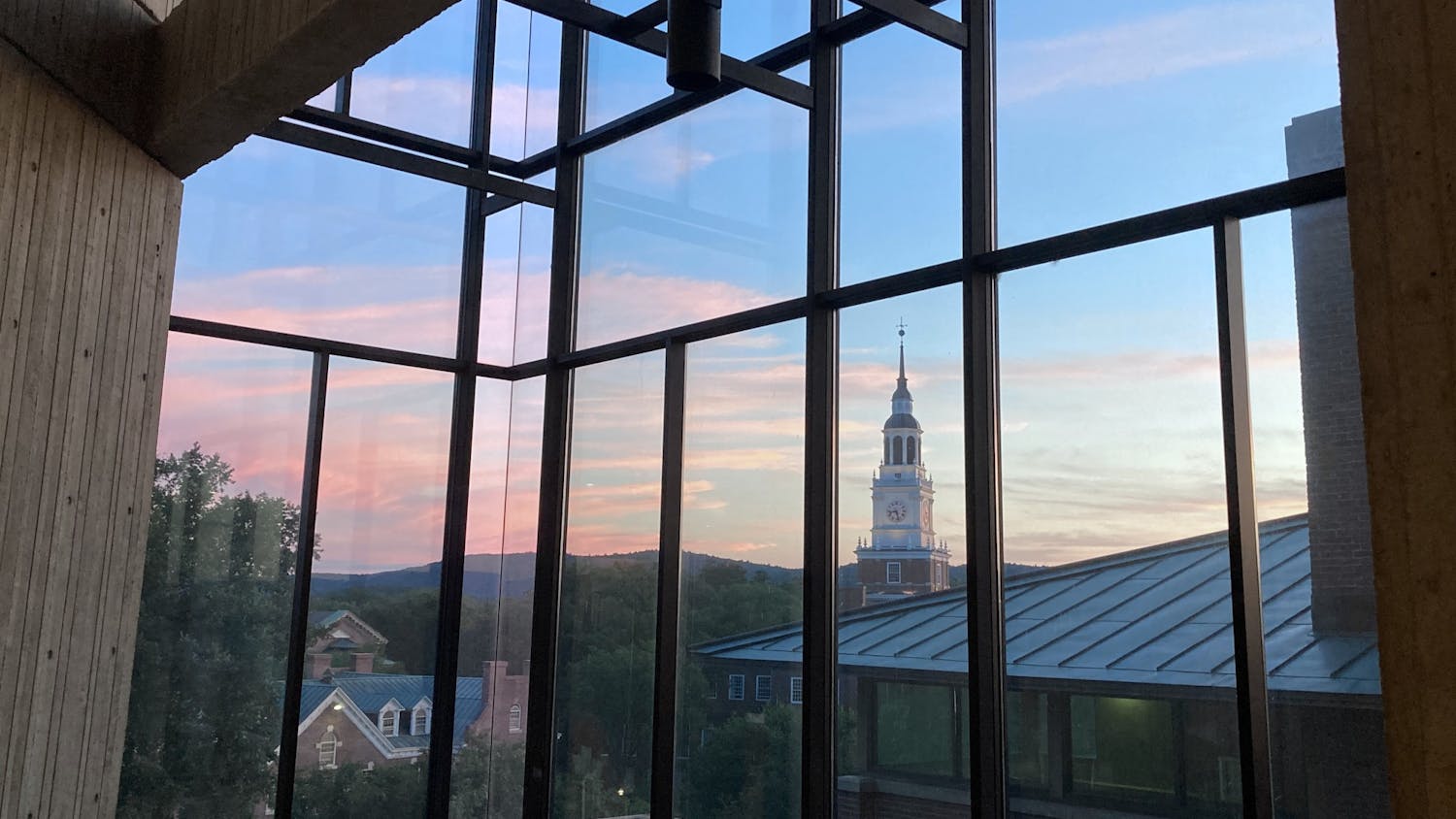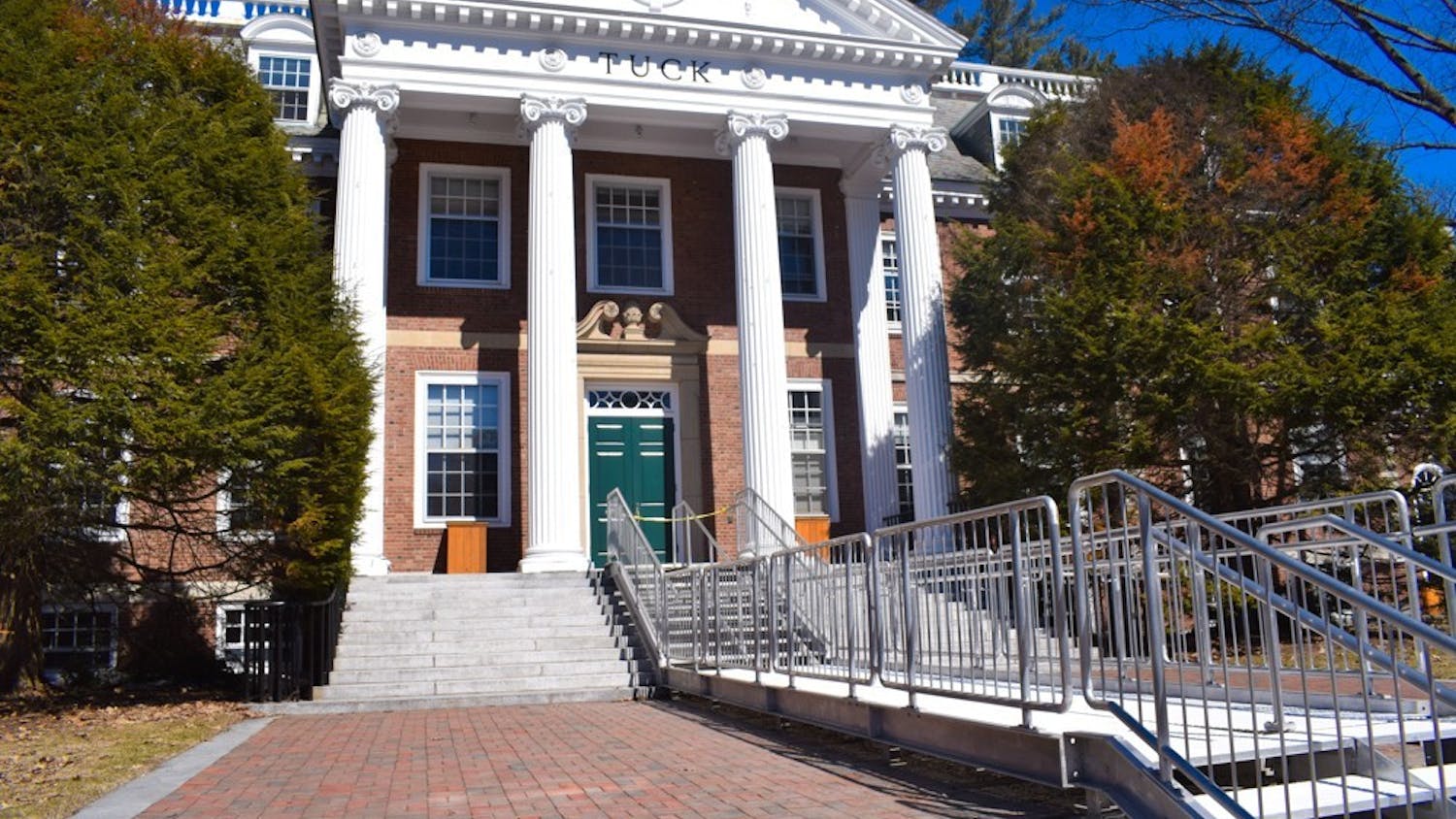After almost a full academic year of living in the Lodge, a dorm located off Hanover’s Main Street, I have learned that nothing is truly that far in Hanover — unless I try to motivate myself to go to the library on a freezing day. In that case, I would much rather not submit my paper than make that cold trek to the stacks. This winter, as my motivation to study dropped with the temperature, my saving grace was the discovery of the Howe Library, Hanover’s public library. Just a minute from my dorm and open daily, this hidden gem quickly became my go-to study spot, saving me from my winter blues.
Despite the Howe Library being somewhat tucked away from campus, I am not the only Dartmouth student to frequent it. Maggie Klein ’26, who said she studies at Howe a couple of times a week, discovered the library last term when the Baker-Berry Library was busy and she couldn’t find a place to sit. After studying in Howe and being surrounded by children and adults instead of college students, she quickly found that she preferred working in a town community space rather than on campus.
“It's just overall not as stressful [as Baker-Berry],” Klein admitted. “I don't feel like everything's connected to Dartmouth, where everyone’s like, ‘oh my gosh, I have to do my work’… Some people are just [at Howe] for fun.”
Similarly, Madeleine Saraisky ’26, another one of Howe's frequent visitors, discovered the library during finals week last fall, when she wanted a space “where not everyone was zeroed in … and it was more relaxing to work.”
With its large windows, quiet atmosphere and lack of familiar faces, Howe Library is a space that allows students to simultaneously keep up with their studies while also escaping the Dartmouth bubble. Howe also provides readily available books to its patrons, including Dartmouth students.
Lily Maechling ’23 said she did not know of Howe’s existence until this spring because she had more time on her hands to start reading for fun again. After being unable to locate books that she could read for pleasure in the Dartmouth library, Maechling’s friend helped her get a library card at Howe where the “whole process was really easy,” she said.
Saraisky said she similarly acquired a library card in order to check out novels for her English class, as she felt more comfortable getting them from the public library than Baker-Berry.
“I feel like the Dartmouth library is very intimidating if you actually want to [check] a book out,” Saraisky explained. Saraisky cited the enormity of the campus library as an obstacle to easily attaining the books she needs, but also recognized that “the Howe Library doesn’t have textbooks.”
Still, many Dartmouth students are unaware of the Hanover public library’s existence. Anna Chabica ’25, who said she only found out about the Howe Library upon my request for an interview, attributed this lack of awareness to Howe’s off-campus location and the large amount of study spaces Dartmouth already offers.
Even though there seems to be a disconnect between some current Dartmouth students and the Howe Library, the public library’s origins are extremely connected to the College, according to a pamphlet commemorating the library’s fiftieth anniversary. The library first opened in 1900 in a house located on 4 West Wheelock Street. The building was a gift from Emily Howe Hitchcock, the daughter of a bookbinder and wife of famed hotelier Hiram Hitchcock, to establish a free library “for the use of the people of Hanover,” the pamphlet states.
Thus, the library began by operating on the first floor of the building, while the upstairs was leased to teachers whose rent was used to pay for the expenses of the library, according to the pamphlet. By the middle of the twentieth century, the library included a general reading room and a children’s library, which provided supplementary material for elementary schools and displayed different educational exhibits.
The original site of the Howe Library was also a historically significant building for the College, as it was the original home of Eleazar Wheelock, Dartmouth College’s founder and first president. Though it continued to house Dartmouth presidents until 1838, it was ultimately sold and later left to Emily Howe Hitchcock, who founded the library.
Howe Library stayed in this location until it moved to a new facility on South Street in 1973, where it resides today. The original Howe Library remains standing as well, and it currently provides housing for Christian students through the Eleazar Wheelock Society.
Will Hubert ’25, who lives in the house that was originally the Howe Library, imagined that it “would be a pretty small library, but for the town of Hanover [back then], I could see it being sufficient enough space-wise to give people a good library.”
Ironically, Hubert mentioned that the first floor is currently being renovated to add a common space as well as a library, likely with books related to Christianity in academics and the history of the Wheelock House.
As the Howe Library’s legacy continues to live on in both its old and new location, Dartmouth students have the opportunity to take advantage of its resources.
The selection of popular books and the accessibility of the check out system of the Hanover public library speak to its intended purpose of serving the Hanover community outside of the student population, distinguishing it from the libraries we have on campus.
“Dartmouth Library is an academic library, so their primary focus and mission is to serve the student body there and obviously support the faculty,” explained Rubi Simon, Howe Library director. “We collaborate a lot with families and the schools because we know there's what we call the literacy life cycle of ensuring that you start at a very young age in kind of fostering that love for literacy and curiosity.”
Simon continued that a goal of the Howe Library is to “ensure that people see us as a neutral space,” while also acknowledging that “we're a college town, so we want to help and support [the student] population.”
Although Simon affirmed that college students aren't the library’s most dominant demographic, she has found that students often discover the library due to their love of reading and local libraries, or simply through word of mouth from other students who frequent it.
“When I’m at the library, it’s not like I’m actively doing something for the community,” Saraisky noted. “But it is cute that it’s like this community space … [Howe] is just awesome. I just love public libraries.”




